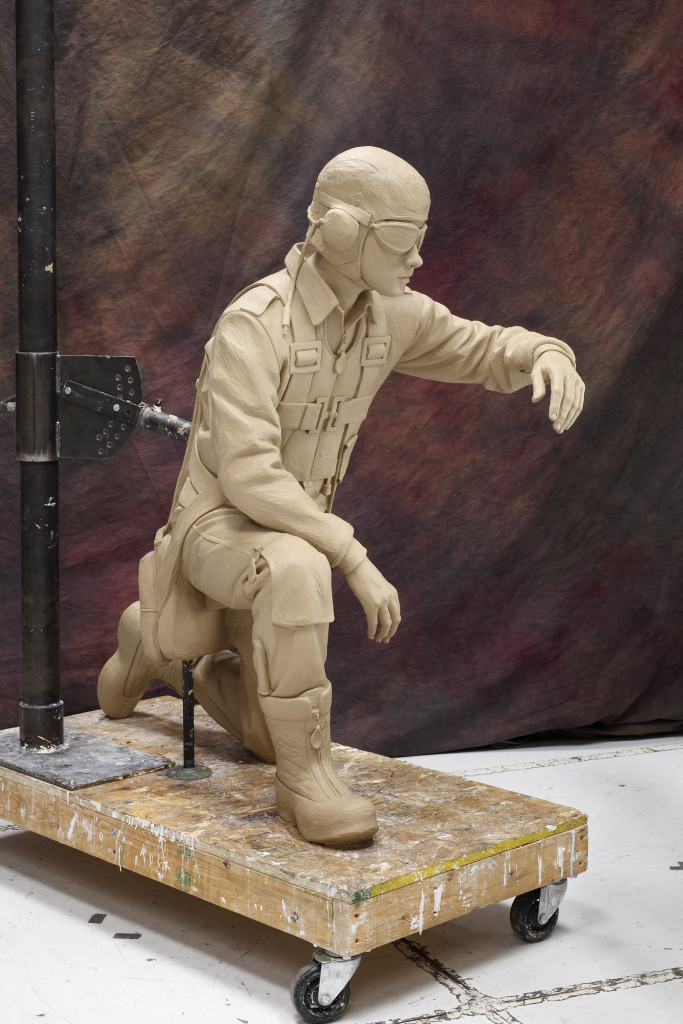“Tailend Charlie” was a term given to the last airplane in a formation of military aircraft. This position was the highest risk and was typically occupied by the newest members of the squadron. As a pilot survived missions, his position moved forward as he assumed more responsibility for leading an element, a flight and ultimately the squadron. TAILEND CHARLIE represents the spirit of a newer member of the squadron already killed.
Fighters were called upon to perform many different types of missions. Dressed as he was when he died, the absence of an oxygen mask signifies they were flying on a low level mission. TAILEND CHARLIE represents the many pilots that did their very best to learn as fast as possible, but were nonetheless ‘behind the learning curve’.
We can sympathize with TAILEND CHARLIE. After limited training and no prior exposure to combat, he found himself skimming along at 400 mph at treetop height, trying to follow his element leader while strafing ground targets that withered under the combined firepower of his squadron’s guns. His expression conveys utter astonishment at this personal introduction to war. And in the midst of his confusion and sensory overload, ground fire penetrated his cockpit, mortally wounding him. Bleeding alone in the cockpit, he passed into unconsciousness and the plane crashed. He never advanced past “Tailend Charlie”.
His hand rests lightly near the hand of his still living comrade. He regrets he wasn’t able to be of more help to the squadron. The death of young soldiers like TAILEND CHARLIE was a constant burden on the squadron. Aside from the negative effect on morale, heavy losses resulted in insufficient pilots and aircraft. At times, this made it impossible to dispatch twelve fighters, leaving the squadron weaker and more exposed to the enemy.
The photos below show the original TAILEND CHARLIE as it was completed in clay. The next step in the process required taking a mold from the clay. That process was done immediately following these photos, destroying the original clay. Now the sculpture exists as part of the completed monument in bronze.









Leave a Reply